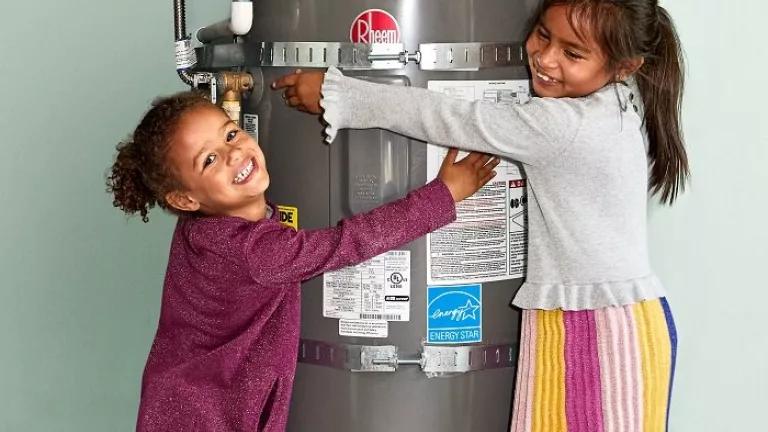Broad Coalition Recommends Updates to Efficiency Standards
Stakeholders have submitted joint recommendations to the Department of Energy to improve the efficiency of a wide variety of household products.

Department of Energy
A coalition including manufacturers, efficiency and consumer groups and NRDC has submitted a joint recommendation to the Department of Energy (DOE) to significantly strengthen energy efficiency standards for a variety of household products. If adopted, the standards would save over 9 quads (quadrillion BTUs) of energy over 30 years—for comparison, the entire U.S. economy uses about 100 quads per year—while simultaneously saving consumers money and avoiding millions of metric tons of climate-warming pollution.
Who was involved?
The parties who signed the recommendation include the Association of Home Appliance Manufacturers, on behalf of several member manufacturers, as well as the American Council for an Energy-Efficient Economy, the Alliance for Water Efficiency, the Appliance Standards Awareness Project, the Consumer Federation of America, Consumer Reports, Earthjustice, the National Consumer Law Center, NRDC, the Northwest Energy Efficiency Alliance, and Pacific Gas & Electric. In addition, state agencies and utilities also participated in the development of the recommendations and are expected to be submitting letters of support.
Which products are affected?
The joint recommendations are for updated efficiency standards for:
- Refrigerators and freezers
- Wine and beverage chillers
- Clothes washers
- Clothes Dryers
- Dishwashers
- Cooking products
Who benefits from standards like these?
Virtually everyone benefits from the reduced pollution that comes from decreasing the need to generate electricity, but these standards are a good deal for consumers, too. The improved efficiency of the products reduces utility bills, saving money over the life of the product. This is particularly beneficial for renters—landlords often pick the cheapest, least efficient products and saddle renters with the financial burden of paying for the increased electricity usage that results.
What comes next?
The ball is in DOE’s court! They will need to act on the recommendation in order to turn it into a finalized standards. While that’s happening, DOE will continue to work on a number of other important standards, part of the administration’s goal of reaching cumulative benefits of 2.4 billion metric tons of carbon pollution and $570 billion in consumer benefits with rules completed during this term.



